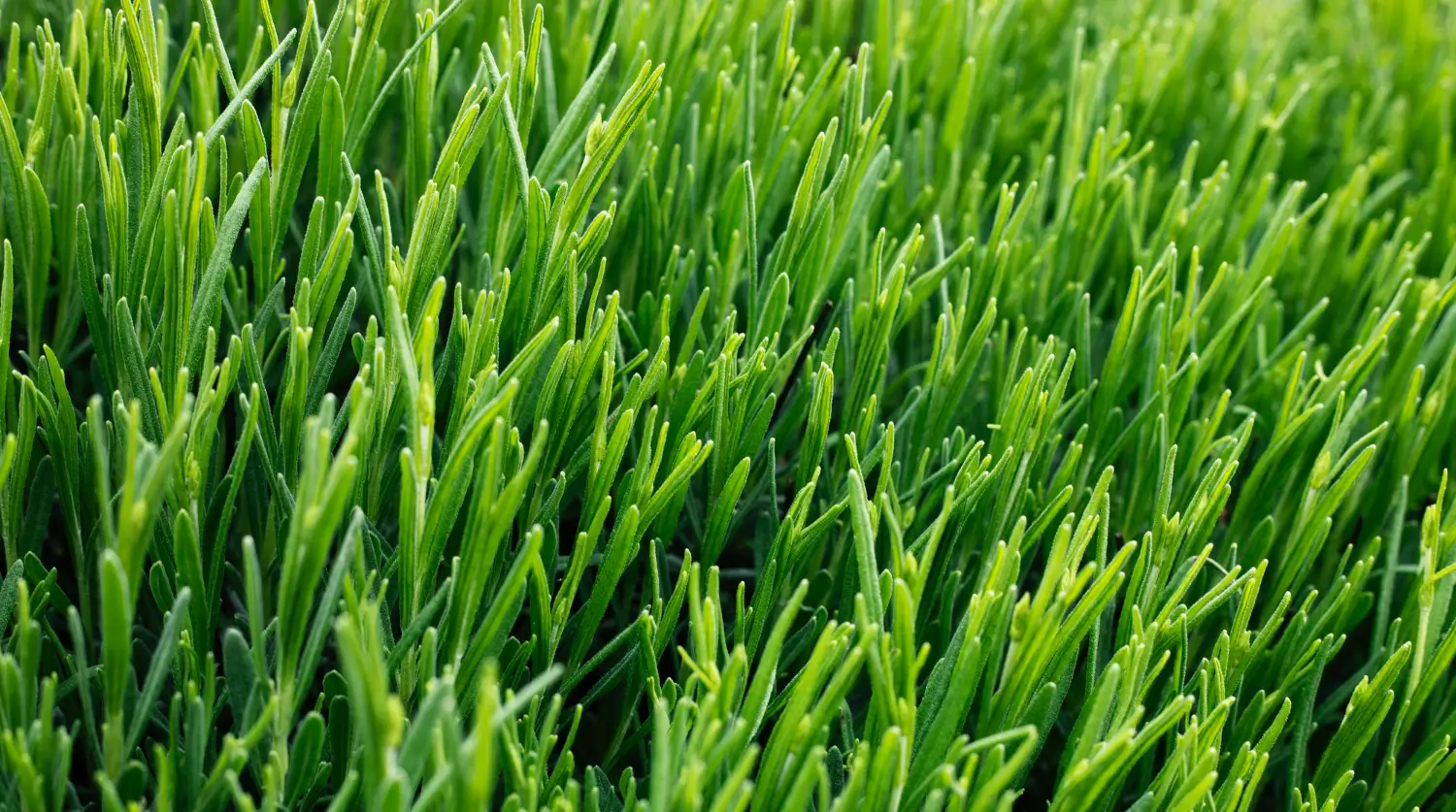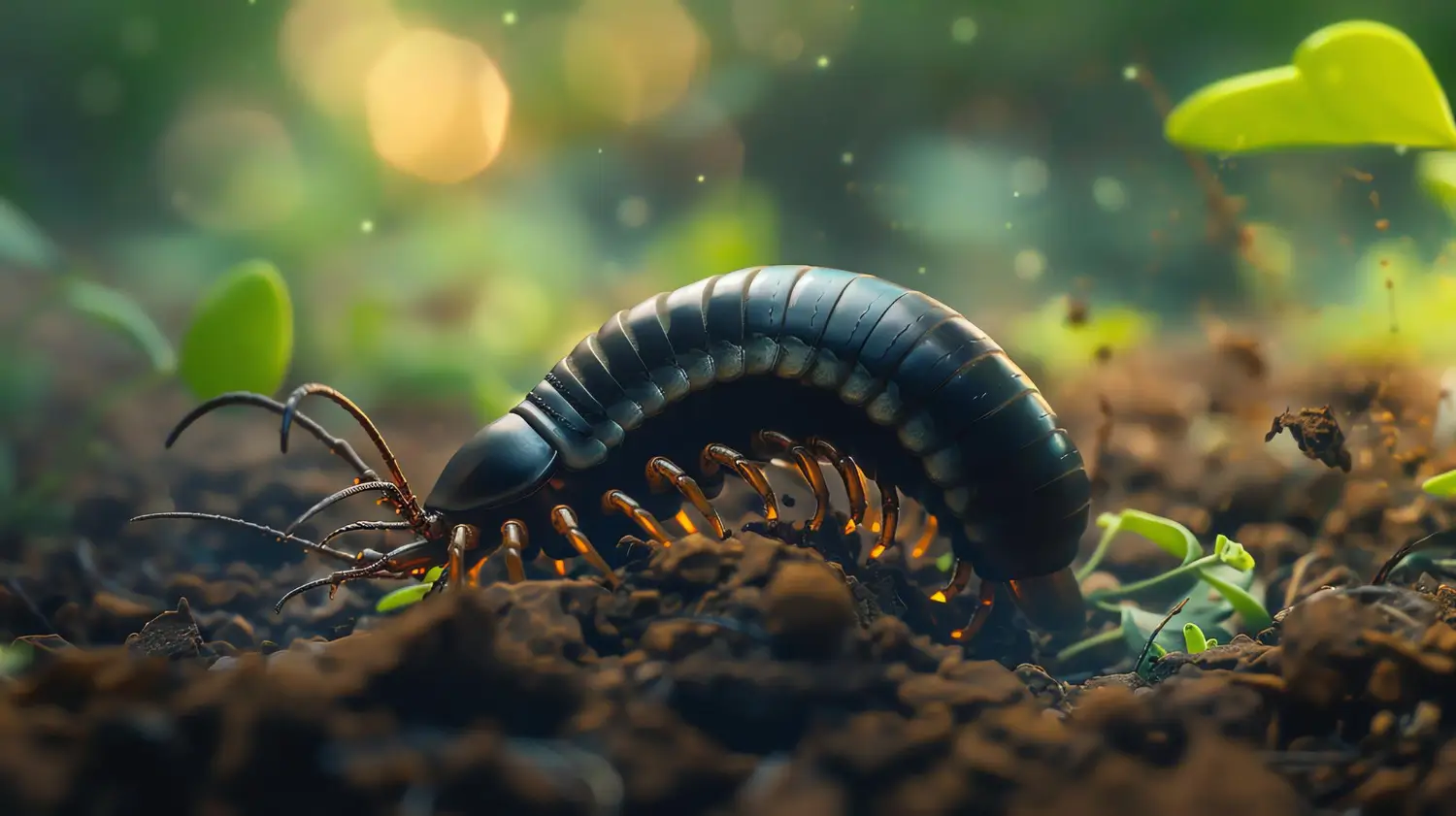
August 24, 2025

Golf courses often use Creeping Bentgrass for putting greens because of the grass's fine texture and relatively smooth surface. It grows close to the ground, forming a dense, green carpet that looks and feels pleasing. Known for its vibrant color, this cool-season grass is widely used on golf course greens, fairways, and tees because it adapts well to different conditions.
Selecting high-quality seeds is crucial for establishing a thriving stand of this grass. Certified seeds can help reduce the chance of weeds and diseases that could harm the grass. In addition to selecting good seeds, proper care practices like preparing the soil, watering regularly, and mowing correctly are also essential for strong growth.
Growcycle offers a variety of products and methods designed to help Creeping Bentgrass grow at its best. Their high-quality grass seeds support good germination and help create strong turf, reducing the risk of weeds and disease. Along with premium seeds, they also provide nutrient-rich fertilizers and soil conditioners to promote healthy roots and lush growth.
Creeping Bentgrass (Agrostis stolonifera) is a cool-season grass known for its fine texture and dense growth. This perennial grass spreads through stolons (above-ground runners), forming a smooth, carpet-like surface. It tolerates low mowing heights, so it’s favored in areas requiring a short, even cut.
Here are some key characteristics of Creeping Bentgrass:
Creeping Bentgrass offers several benefits, especially in golf courses, where a high-quality, smooth playing surface is essential. Here are the benefits of using Creeping Bentgrass:
Creeping Bentgrass is beneficial due to its exceptional turf quality. Its fine texture and dense growth habit create smooth, uniform surfaces ideal for golf course greens and high-end lawns. This grass provides an aesthetically pleasing appearance that improves the overall landscape wherever it is planted.

Setting up natural grass turf is important for keeping the environment healthy and increasing the area's value. With proper care and maintenance, growers can achieve lush, green, and healthy grass.
LEARN MORE →This grass species exhibits great versatility, thriving under a variety of conditions. It is appropriate for northern climates because of its remarkable resistance to cold temperatures. Additionally, Creeping Bentgrass can recover rapidly from stress or damage, which benefits high-traffic areas like golf courses and sports fields.
One of the benefits of Creeping Bentgrass is its ability to withstand wear and recover efficiently. Its dense mat of stolons allows it to heal quickly from foot traffic or physical damage, maintaining its lush appearance and vitality throughout the season. This durability is crucial for maintaining playability on sports surfaces.
Another advantage of Creeping Bentgrass is its compatibility with close mowing, which helps achieve the desired low-cut playing surfaces found on golf courses. Its ability to thrive under stringent maintenance schedules ensures that greens remain smooth and even for accurate play.
Creeping Bentgrass is more resistant to many common diseases and pests, so it needs fewer chemical treatments, which can reduce potential environmental harm. Turf managers can strengthen this natural defense by choosing disease-resistant varieties and using good maintenance practices.
Several varieties of Creeping Bentgrass seeds offer different benefits for turf quality, disease resistance, and environmental adaptability. Here are some popular varieties:
Each variety has unique characteristics that cater to specific maintenance needs and environmental conditions, helping turf managers choose the best option for their turf.
When selecting Creeping Bentgrass seed, there are several important factors to consider to ensure the best results for the intended area:
Considering the area's climate is crucial when choosing the Creeping Bentgrass seeds. Different types of Bentgrass handle cold and heat differently, so selecting seeds suited to the area’s climate helps the grass grow well and stay healthy.
Another crucial consideration when choosing seeds is evaluating the kind and state of the soil. Certain types of Creeping Bentgrass thrive in particular types of soil. After testing the soil to determine its pH, nutritional levels, and texture, choose a seed type that will flourish in the soil.
Different Bentgrass seeds have specific maintenance needs, such as mowing frequency, watering schedules, and fertilization. Choosing a type compatible with the skills and resources needed to care for it is crucial. While some types can demand more frequent care, others require more thorough attention.
When choosing seeds, consider the turf's main function. The choice for a golf course, sports field, or ornamental lawn should align with the intended use. Some varieties are bred for specific uses, such as high tolerance to foot traffic or superior aesthetic properties.
It is important to ensure that the gardener selects high-quality, certified seeds. These seeds typically have a higher germination rate and are less likely to contain weed seeds or pathogens, ensuring a healthier and more uniform turf.
Proper planting techniques are essential for the successful establishment of Creeping Bentgrass. Soil preparation is one of the most important steps in creating a healthy, lush lawn.
The first step in the process is to test the soil to check its pH and nutrient content. A pH between 6.0 and 7.0 is ideal for Creeping Bentgrass, as it allows for optimal nutrient uptake and growth. Soil additions like sulfur or lime can bring the pH within the appropriate range.
Several effective methods for seeding Creeping Bentgrass are suited to different conditions and preferences.

Maintaining a lush, green lawn is a common goal for many homeowners, but it requires more than just regular mowing and watering. One of the most crucial aspects of lawn care is proper fertilization.
LEARN MORE →Caring for Creeping Bentgrass involves several key practices to maintain its health and appearance.
Effective watering and irrigation practices are crucial for its success. The ideal method is to water sparingly but deeply, letting the soil dry out a little in between applications. This increases the turf's resistance to drought by pushing roots farther down in pursuit of moisture. Early morning is the optimal time to water, as it reduces evaporation and ensures that the grass is dry by nightfall, reducing the risk of fungal diseases.
Regular mowing maintains the grass at the desired height and encourages the development of a dense, uniform turf. The ideal mowing height for Creeping Bentgrass varies depending on its use but generally ranges between 0.125 to 0.5 inches for golf greens and slightly higher for lawns.
Fertilization is a key factor in achieving dense, vibrant grass. A balanced fertilizer can supply essential nutrients to support growth and maintain the grass's health. Nitrogen is the main nutrient needed for rapid growth, but potassium and phosphorus support root growth and general plant health.
Cutworms, chinch bugs, and white grubs are common pests that affect Creeping Bentgrass. If these pests are not controlled, they can cause serious harm. Biological treatments and targeted pesticide applications are two examples of integrated pest management (IPM) techniques that aid in efficiently controlling pest populations.
Fungal infections like brown patches and dollar spots are common in Creeping Bentgrasss. Preventing these diseases involves maintaining proper cultural practices, including balanced fertilization, regular mowing, and adequate drainage.
Growing successful Creeping Bentgrass involves identifying and addressing common issues that may arise during or after growth, such as:
Here is some expert advice for achieving long-term success in maintaining healthy Creeping Bentgrass turf:
Seasonal care guides provide valuable insights into the tasks required to maintain Creeping Bentgrass throughout the year. Spring is a time for rejuvenation, emphasizing fertilization, aeration, and overseeding to address winter damage and promote growth. Routine irrigation and mowing modifications facilitate a healthy growing season.
Summer presents challenges, including heat stress and increased pest activity. Monitoring soil moisture levels and adjusting irrigation are critical to prevent drought stress. Applying preventive fungicides can reduce the risk of fungal illnesses, which flourish in warm, humid environments.
Fall is ideal for establishing and strengthening Creeping Bentgrass in preparation for winter. Core aeration and fertilization support root development and nutrient storage, enhancing the grass's resilience to cold temperatures. Overseeding can address thin areas and improve turf density before the onset of winter dormancy.
Even with careful management, Creeping Bentgrass can encounter common issues that require troubleshooting. Thatch accumulation, for example, can hinder water and nutrient uptake. Routine aeration and dethatching with thatch products for soil health, which efficiently distribute water and air to the root zone, solve this issue.
Another issue that impacts root development and turf health in general is compacted soil. Addressing soil compaction through core aeration improves drainage and promotes healthier root development. Maintaining a routine aeration schedule helps prevent compaction issues from becoming severe.
Environmental factors like heat and dryness can cause the lawn to shrink and become discolored. Adjusting irrigation practices and providing supplemental water during dry periods can alleviate these stressors. Applying appropriate fertilizers and maintaining proper mowing height contribute to stress resilience.
Advanced turf management techniques offer opportunities to optimize the performance of Creeping Bentgrass and achieve superior results. Precision turf management involves using advanced technology, such as GPS-guided equipment, to apply inputs precisely and efficiently. This method maximizes the use of resources while minimizing waste.
Turfgrass breeding and selection programs continue to develop improved varieties with improved disease resistance, color retention, and stress tolerance. Using these modern cultivars can increase the durability and appearance of Creeping Bentgrass turf.
To ensure the long-term sustainability of Creeping Bentgrass, a useful approach to turf management should include:
Adopting these advanced techniques can improve turf quality and achieve excellence in lawn care.
Achieving uniform color in Creeping Bentgrass turf is key to maintaining an aesthetically pleasing lawn. Consistent fertilization and nutrient management are fundamental in promoting even growth and color. Applying balanced fertilizers at the right intervals supports healthy, vibrant turf.
Selecting the right grass variety also influences color uniformity. Modern cultivars are bred for consistent color retention under varying conditions. Choosing a variety known for its color consistency ensures a more uniform appearance throughout the season.
Regular mowing and irrigation contribute to color uniformity by promoting consistent growth and moisture distribution. Monitoring soil pH and nutrient levels through regular testing allows for targeted adjustments that improve color uniformity. These methods can be used to produce lush, consistent-colored turf.
Adding landscaping features can make Creeping Bentgrass turf look better. Ornamental plants, shrubs, and flower beds can bring color and texture to the area, creating a beautiful and welcoming space. Choosing plants that grow well in similar conditions to Bentgrass helps them work well together and makes maintenance easier.
Pathways and walkways offer both practical and visual benefits. They help guide visitors through the landscape while keeping the turf safe from foot traffic. Using materials like stone or gravel boosts the natural beauty of the grass and adds interest to the design.
Including water features, such as ponds or fountains, can also improve the area's look and feel. These features create a focal point and improve the overall atmosphere, making it a nice place to relax and enjoy.
Adopting sustainable lawn practices is essential for maintaining healthy Creeping Bentgrass turf while minimizing environmental impact.
Eco-friendly fertilization options provide sustainable solutions for nourishing Creeping Bentgrass turf. Here’s a breakdown of the options for organic fertilizers with a slow-release nutrient profile that support long-term turf health:
Compost tea provides essential nutrients and beneficial microorganisms to the turf. Compost is steeped in water to extract nutrients, which are then applied to the grass to create this liquid fertilizer. Compost tea improves soil health, encourages beneficial microbial activity, and improves nutrient uptake by the grass.
Water conservation is a crucial consideration for efficiently maintaining Creeping Bentgrass lawns. Implementing efficient irrigation practices reduces water usage while ensuring the turf receives adequate moisture.
Drip irrigation systems reduce runoff and evaporation by delivering water straight to the root zone. Rain sensors and smart irrigation controllers optimize watering plans based on current weather conditions.
These technologies adjust irrigation based on rainfall and temperature, preventing overwatering and reducing waste. Sensors monitoring soil moisture levels provide valuable data for adjusting irrigation frequency and volume.
Creeping Bentgrass is popular for its beauty, strength, and ability to adapt, making it a favorite for lawns and golf courses. Learning about its different types, how to plant it, and how to care for it can help create a healthy, vibrant lawn. With good planning and care, Creeping Bentgrass can turn any area into a lush green space.
Growcycle provides gardening solutions to keep Creeping Bentgrass healthy and beautiful. They offer a wide range of methods and products that support grass health at every growth stage. Growcycle suggests using their special organic fertilizers, which provide the nutrients that Creeping Bentgrass needs.
Disclaimer:This material is for informational purposes only and should not be relied on for legal, medical, financial, or any other form of professional advice.
Creeping Bentgrass should be mowed at least once a week during the growing season to maintain a height of about 1/4 to 3/4 inches. Frequent mowing helps promote denser growth and prevents thatch build-up, ensuring a healthy and lush appearance.
To manage weeds effectively in Creeping Bentgrass, it is crucial to maintain a thick and healthy lawn to naturally crowd out weeds. While post-emergent herbicides can be used to target weeds that have already appeared, pre-emergent herbicides can help stop weed seeds from growing. Preventing infestations requires early intervention and routine monitoring.
Improving Creeping Bentgrass disease resistance involves proper cultural practices, such as adequate fertilization, good air circulation, and maintaining balanced moisture levels.